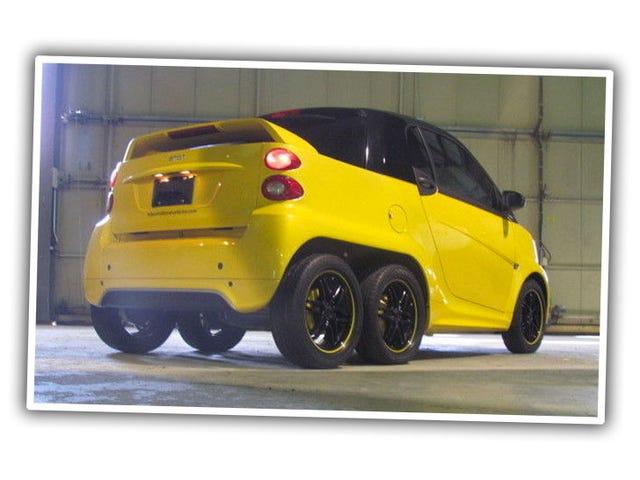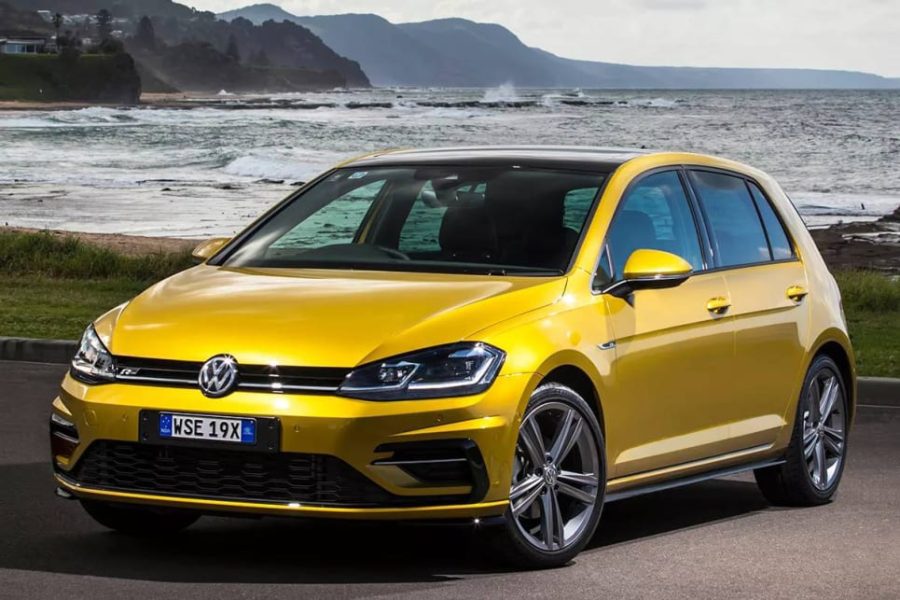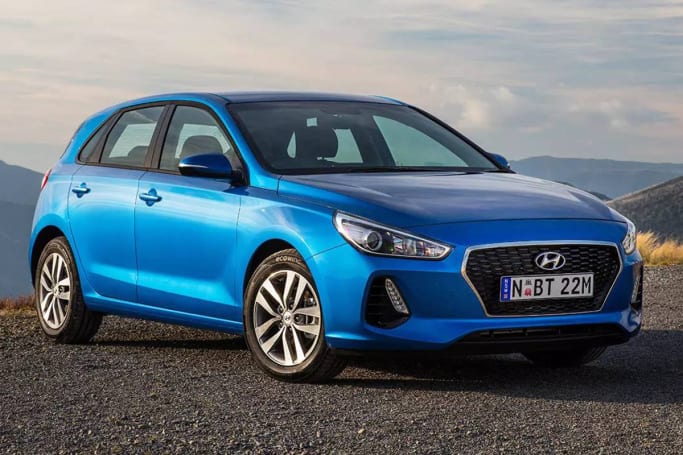
Why a hatchback is the smartest car you can buy

Europe has long been a place where a sunroof the size of a VW Golf reigns supreme.
There was a time when Australians visiting Europe were genuinely shocked and concerned about the size of things. Not just the numbers on their speed limit signs, and not even the population, but the tiny, fidgety nature of their cars.
Europe has long been a place where a hatch the size of a VW Golf reigns supreme, and where true full-size people genuinely consider a Smart car to be a smart option.
It may be a sign that we're getting more urban, or at least more urban, but Australia has indeed followed suit, with hatches now replacing Falcodere-sized sedans as the segment of choice.
 Hatchbacks used to represent the best that could be done for the least amount of money.
Hatchbacks used to represent the best that could be done for the least amount of money.
As any city dweller will tell you, living in Sydney, Melbourne, Brisbane or even the relatively large and spacious Canberra means doing more with less.
Perhaps more tellingly, those of us who are old enough to remember the times when there was no room for $1 to cents on service station signs know that fuel economy is becoming a very real part of our home economy.
That's why hatchbacks are so important right now. Built for double, triple and quadruple loading, hatches are urban workhorses, ready to fit as much as a person can into the smallest space available.
It's the easiest way to get around - stop and park - in cities, and it will be until someone comes up with a reliable method of teleportation. Most modern hatchbacks can also drive long distances, solidifying their position as suitable contenders for a place in your garage if you happen to own such a car.
What's so interesting about hatches?
Hatchbacks used to represent the best you could get by with for the least amount of money (as long as your pride could stand the derision of Commodore and Territory owners). They still do, and for almost absurdly small amounts, in the case of vehicles like the Suzuki Celerio.
The other side of the newly minted coin is the new wave of handheld performance that has exploded since the start of the new millennium and shows no signs of slowing down.
Ten years ago Alfa Romeo 184 GTA with 147 hp.
Most hatchbacks serve as an easy and economical way to make the most of a little.
Today, cars like the mind-blowing Mercedes-Benz A45 have massive power - 280kW - can seat five (at least if they're skinny) and embarrass anyone on this side of a rocket launcher at a relatively bargain price.
Most hatchbacks, however, serve as an easy and economical way to make the most of a little.
Short overhangs make them easy to park, and steep rear ends mean rear headroom and luggage space aren't overly compromised by stylistic swoops.
Since the interior of hatchbacks tends to be smaller than those of sedans, station wagons and SUVs, manufacturers go to great lengths to maximize available space. The rear seats fold down and recline forward to increase luggage space for bulky items, or slide out fully.
Hatches don't have to be small
Thanks to their relatively petite proportions, small to medium hatches can handle the unique situations that cities throw at the urban warrior, such as tight alleys, small parking spaces, and tight turns. They will also be cheaper to operate and maintain due to smaller and simpler components. Just compare the cost of a set of new tires for a Suzuki Swift to something like a Toyota RAV4.
Hatches also should not be small. Some large cars, like the left-hand Tesla, as well as a few niche Audis and odd-looking BMWs, use a long, sloping hatchback to increase cargo space. In the case of Tesla and Audi, the aesthetics don't suffer, but if you're looking at the 3 Series GT with longing, it's time for a new jacket that rides up in the back. On the other hand, the 4 Series Gran Coupe is one of the most beautiful Beemer cars they make.
What's wrong with abbreviation?
There are few reasons to bypass hatches, and most of them are either downright picky or old-fashioned. The most compelling argument obviously has to do with size, especially in a world where people are getting bigger.
While sunroofs make the most of their space, they never give you the grandiosity of station wagons or SUVs or people carrying people.
 Most hatchbacks serve as an easy and economical way to make the most of a little.
Most hatchbacks serve as an easy and economical way to make the most of a little.
If you and yours can't squeeze into sunroofs like the Golf, Focus, 3 and Corolla, there are a few bigger ones masquerading as sedans like the Skoda Octavia that need some attention.
If that doesn't bother you, it's time to get in the van, but since you're a person living in Australia, you'll buy an SUV instead.
On the open road, smaller and cheaper sunroofs can start to show a few flaws that elude radar in urban environments.
Smaller, lower horsepower engines are the most obvious disadvantage, but low-tech solutions like live rear axles and rear drum brakes are still common in the lower end of the market.
Conversely, high-end hatchbacks tend to have a sportier character with a corresponding stiffer suspension. This can make long distance cruising a chore, especially on poor surfaces.
 They are also cheaper to operate and maintain due to smaller and simpler components.
They are also cheaper to operate and maintain due to smaller and simpler components.
In terms of pure driving pleasure, the end-of-market Golf GTI/RenaultSport Megane has a lot to offer, while rear-wheel drive enjoyment is only available in the BMW 1 Series, which has its own package issues (small cars and transmission tunnels don't mix). ).
To hatch or not to hatch?
Hatchbacks fit the urban spirit better than others, as Europeans have long known: they fit as much as possible, fit as comfortably as possible in the smallest possible space.
The earliest examples of this breed, such as the Renault 4 and Volkswagen Golf, were created for this very purpose. The original Mini and Fiat 500, while technically not hatches, followed the same principles. Modern versions of both now offer hatchback practicality with style.
Cities are neither getting less crowded nor getting smaller, while you've probably noticed that parking spaces seem to be getting smaller, unlike fuel prices, which only trend in one direction.
Sunroofs make sense, even if they can be as exciting as washing machines, but at least the modern ones offer a level of performance, practicality, and pampering that belies their humble origins.
Related articles:
Why SUVs are becoming so popular
Why a station wagon should be considered instead of an SUV
Is it worth buying a mobile engine?
Why people buy coupes even if they're not perfect
Why should I buy a convertible?
Utes is the most versatile car on the road, but is it worth buying?
Why buy a commercial vehicle
